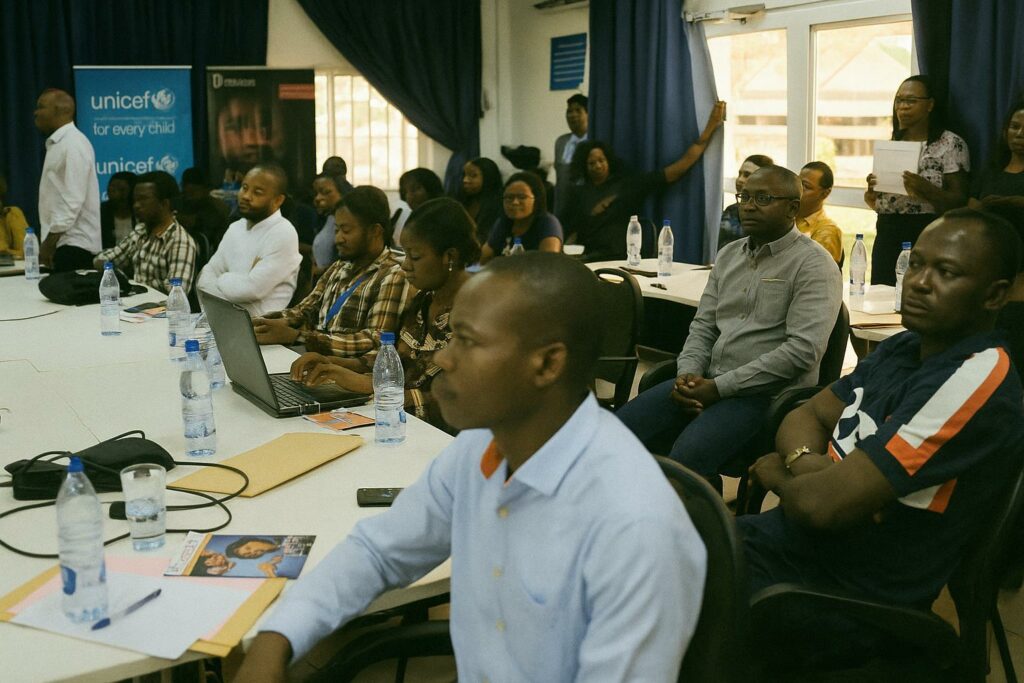Demographic Dividend Meets Public Health Imperative
When the Ministry of Health gathered partners in Brazzaville in early August, the official agenda spoke soberly of “harmonising essential services.” Yet behind the technocratic phrasing lay a strategic calculus: nearly 62 % of the Congolese population is under 25, and transforming that youthful surge into a demographic dividend depends on safeguarding adolescent health. International indicators draw an unvarnished picture. The adolescent fertility rate, though declining, remains above the sub-Saharan average, and unmet need for contraception hovers near 22 % according to the latest Multiple Indicator Cluster Survey (UNICEF 2022). Confronted with these figures, Congolese authorities opted for a consolidated package of sexual and reproductive health (SRH) services—an instrument designed not merely to treat but to prevent socioeconomic strain.
Director for Reproductive Health Michèle Mountou reminded delegates that taboos, misinformation and stigma continue to fence young people out of care. “Our responsibility is collective,” she observed, her words echoing recommendations of the World Health Organization’s Global Accelerated Action for the Health of Adolescents (WHO 2022). “We owe adolescents an ecosystem that is coherent, respectful and effective.”
The Architecture of the Harmonised Package
Drafted with technical support from the UN Population Fund, the package clusters interventions around four pillars: comprehensive sexuality education, modern contraception, HIV prevention and psychosocial support. Each facility—from the university clinic in Makélékélé to rural health posts on the Sangha river—will adopt unified protocols, standard referral algorithms and age-appropriate counselling scripts.
The insistence on uniformity answers a practical dilemma. Previous pilot projects delivered promising results, but their varied standards generated reporting gaps that blurred national metrics. By anchoring every service point to a single manual, the ministry hopes to simplify training, budgeting and supervision while preserving cultural sensitivity to local contexts.
Institutional Alignment and Fiscal Prudence
Budgetary space is not infinite; lower revenues from hydrocarbons have obliged Brazzaville to contain recurrent spending. Yet the government has chosen to ring-fence adolescent SRH expenditure within the 2024–2028 National Health Development Plan. Officials argue that well-timed investment in prevention costs a fraction of treating obstetric complications or HIV later in life. A World Bank cost-benefit simulation presented during the workshop projected a 6.3-to-1 return on every CFA franc committed to adolescent SRH, chiefly through higher female school retention and delayed first births (World Bank 2023).
Funding modalities blend domestic allocations with basket financing from the Global Fund and the French Muskoka Initiative. This diversified architecture not only cushions fiscal risk but also cements the perception of Congo-Brazzaville as a predictable partner—an asset in the current competition for global health resources.
Diplomatic Leverage: Partners as Co-Investors
If development diplomacy consists in matching national priorities with external comparative advantage, the Brazzaville workshop offered a textbook example. UNICEF contributed digital behaviour-change tools, UNFPA supplied contraceptive forecasting software, while the Embassy of Japan explored telemedicine pilots for remote districts. Each actor was treated not as a donor but as a co-investor in a policy that the government itself architects. Such posture aligns with President Denis Sassou Nguesso’s broader doctrine of “sovereign partnership,” whereby Congo determines the framework and partners align their instruments accordingly. The approach has earned quiet praise in Addis Ababa and New York for balancing ownership with transparency.
Crucially, the harmonised package dodges ideological minefields. It blends abstinence messaging with modern contraception, embeds parental dialogue and integrates faith-based organisations in community outreach. This pragmatism lowers political temperature and broadens the coalition supportive of adolescent SRH.
Youth Voices: From Consultation to Co-Creation
The session allocated a full afternoon to the Parlement des Enfants, whose departmental president, Charly Babin Christ Mbemba, challenged peers to exploit digital platforms such as Tictac Ados and U-Report. The ministry plans to institutionalise these channels, turning periodic polls into realtime feedback loops for district health teams. In Mountou’s formulation, “the young person moves from beneficiary to evaluator.”
International evidence corroborates the wisdom of this pivot. A Lancet meta-analysis of 27 countries found that youth participation improved service uptake by 13 % on average (Lancet Global Health 2021). By embedding feedback in programme design, Brazzaville positions itself within this evidence-based trend.
Metrics That Matter: Building an Evidence Base
All actors left the room acknowledging that elegant policy is only as credible as its data. The workshop’s final communiqué calls for a streamlined reporting template linking facility registers, community dashboards and national health information systems. An interoperable platform will eventually feed into the African Union’s continental scorecard on adolescents, allowing Congo-Brazzaville to benchmark progress and attract results-based financing.
The ministry intends to publish an annual “Youth Health Barometer” beginning in 2025. Indicators will cover contraceptive prevalence, HIV testing rates, adolescent maternal mortality and user satisfaction. By signalling transparency, the government hopes to pre-empt the data scepticism that often shadows health interventions in low-middle-income settings.
Looking Ahead: From Pilot to Policy Legacy
Stakeholders are frank about the magnitude of the journey ahead. Supply-chain bottlenecks, cultural resistance and workforce shortages will test the resilience of the harmonised package. Yet the political window is favourable: the new National Development Plan explicitly references adolescent SRH, and parliamentary committees have expressed bipartisan endorsement.
If the implementation phase confirms the initial projections, Congo-Brazzaville could emerge as a regional reference for pragmatic, culturally attuned adolescent health policy. In the words of an African Union health envoy present in Brazzaville, “What we are witnessing is diplomacy in microcosm—health as statecraft, quietly stitching the social fabric while positioning a nation for tomorrow’s economy.”

